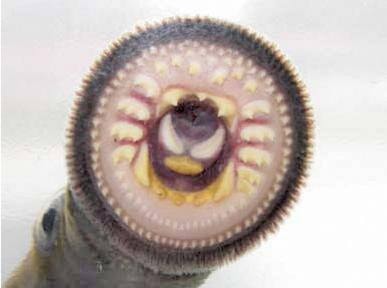Did you know that we have a lamprey that lives in Cowichan and Mesachie lakes and no where else and it is considered critically imperilled?
Due to some blundering in the fish naming ‘bureaucrazy,’ our lamprey’s official name was shortened from the Vancouver Island lamprey to the Vancouver lamprey, but Dr. Dick Beamish of the Department of Fisheries and Oceans’ Nanaimo Biological Station is hoping that soon it will officially renamed the Cowichan lamprey.
Beamish is the scientist who originally identified the Cowichan lamprey as a separate species in the 1980s.
You might wonder how a lamprey could become a threatened species.
Don’t fishermen regularly find lamprey scars on fish in Cowichan Lake, and aren’t lampreys raging out of control in the Great Lakes?
Let’s start with the general and go to the specific. First of all, lampreys are a primitive and very successful group of fish that date back at least 350 million years.
They are long slender eel-like species, but unlike eels, they don’t have scales or jaws, and they have cartilage instead of bones – hence the primitiveness. There are at least 34 different lamprey species worldwide and the Cowichan lamprey is a very special one. Our lamprey only evolved as a separate species quite recently. It is derived from Pacific lamprey that became isolated in Cowichan Lake 10,000 or 15,000 years ago during the ice age.
Some of the differences that Beamish found between the Pacific lamprey and the Cowichan Lamprey include:
• Smaller length 14 to 26 cm, roughly half that of the Pacific;
• Larger eyes that are higher on the head than for the Pacific (the better to see you with my dear); and
• The oral disc/mouth became significantly wider than the diameter of the head that of the Pacific (the better to latch onto you, my dear).
Both species reproduce once and then die, but Pacific lamprey spawn earlier, in April and May, than the Cowichan lamprey, which reproduce in May and August. The Pacific also spawns in rivers of streams, while the Cowichan is a lake spawner. A final and key difference is that physiologically, Cowichan lamprey are able to spend their entire life in fresh water.
The root of the word lamprey is stone sucker, and true to form, Cowichan lamprey pairs have been seen carrying small stones to cover their gravel nests.
They likely produce over 10,000 eggs, which hatch into larvae in two to three weeks. The worm-like larvae hang out in the substrate feeding on fine textured organic materials. They do this for five or six years before they metamorphose into adult lampreys. Then, they overwinter in gravel areas before they spend a year feeding in the lake. They then return to gravelly areas to spawn.
During that last year of life, like other parasitic lampreys the Cowichan lamprey develops an image problem.
The way it earns a living – by attaching its funnel shaped mouth to seemingly innocent host fish and feeding on blood/body fluid – makes it hard to love the lamprey.
And then there is the image of the sea lamprey that have wreaked havoc on the native fish of the Great Lakes. The common misconception is that lamprey are hard on fish populations. Seldom mentioned in the Great Lakes story is the fact that prior to the invasion of the sea lamprey, two native species of parasitic lamprey had coexisted with those Great Lakes fish populations for thousands of years.
Highly evolved parasites don’t kill their host – it’s not a sustainable strategy. The prevalence of scarred fish in Cowichan Lake may indicate that the Cowichan lampreys are feeders, not killers.
Scientists know that siltation from poor land use practices threaten lamprey habitat. They also know that coho, one of the Cowichan lampreys’ primary food sources, have declined drastically.
And, we know that the Cowichan lamprey is a native species. It belongs here. It’s part of an amazing ecosystem that is composed of species that have evolved together – right here where we have chosen to live. As a threatened species, it is illegal to kill, harm, harass, capture, or take the Cowichan lamprey. Collectively, we need to protect it. Its future is in our hands.
Some lamprey trivia....
• Not all lampreys are parasitic. Some continue to be filter feeders as adults.
• King Henry the first is reported to have died from eating too many lamprey. The royals seem to have been very keen on lamprey pie.
• Dick Beamish assures me that lamprey don’t attack people. We’re the wrong size and shape and don’t smell right. If you really want to attract one,– rubbing herring oil all over your body might work.
